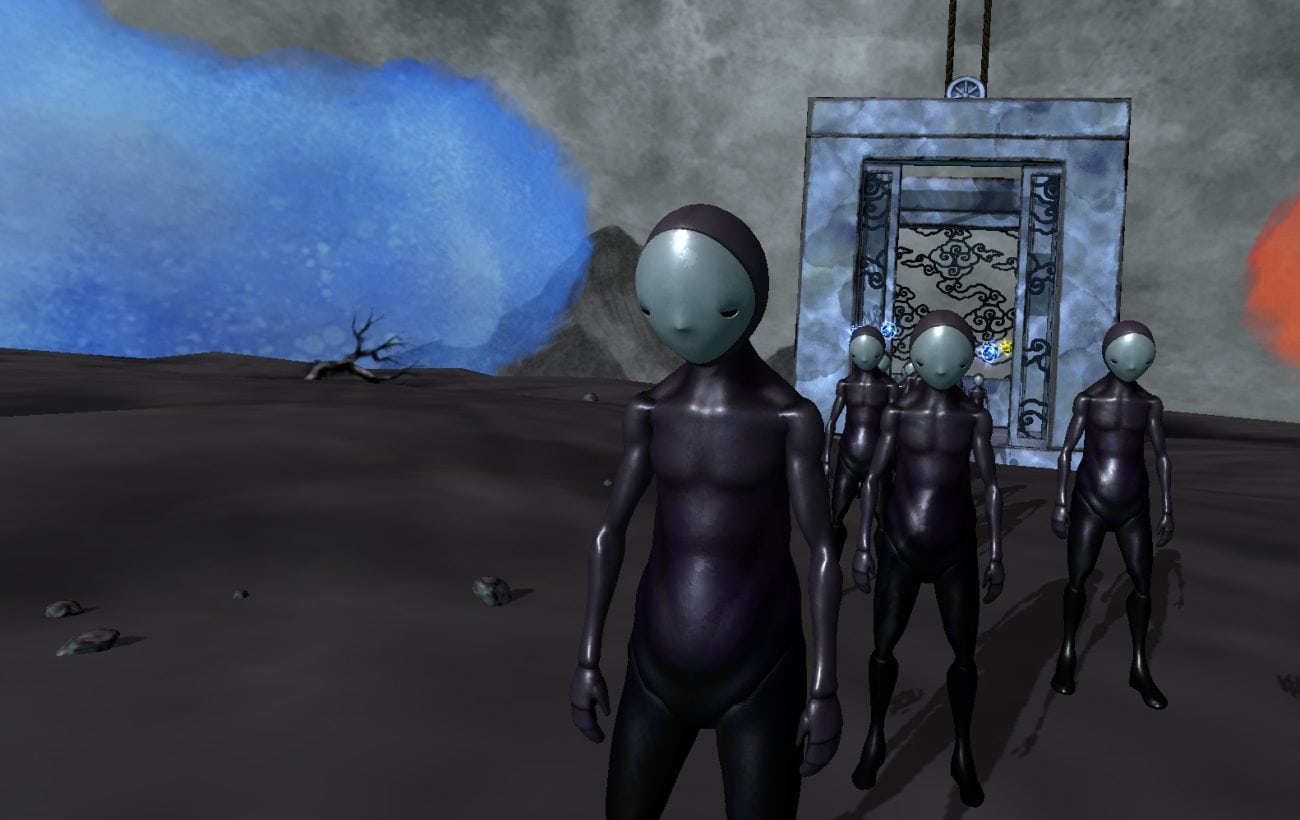The time has come for me to finally dedicate a long segment to The Key. Celine Tricart’s interactive VR film has been snatching one award after the other and certainly revolves around a current topic. I had the opportunity to watch The Key already and the even absolute pleasure to chat with the director.
A Well-Kept Secret
Next to Wolves in the Walls, The Key was one of my favorite entries at this year’s Tribeca Film Festival in New York City, where the film also celebrated its world premiere. It would appear that I was onto something, as it won the Storyscapes competition there. Every year, five VR/AR projects are selected to compete for the award for most innovative storytelling.
Now, The Key made its European debut at the Venice International Film Festival—only to take home the cross-category Grand Jury Prize for Best VR Immersive Work.
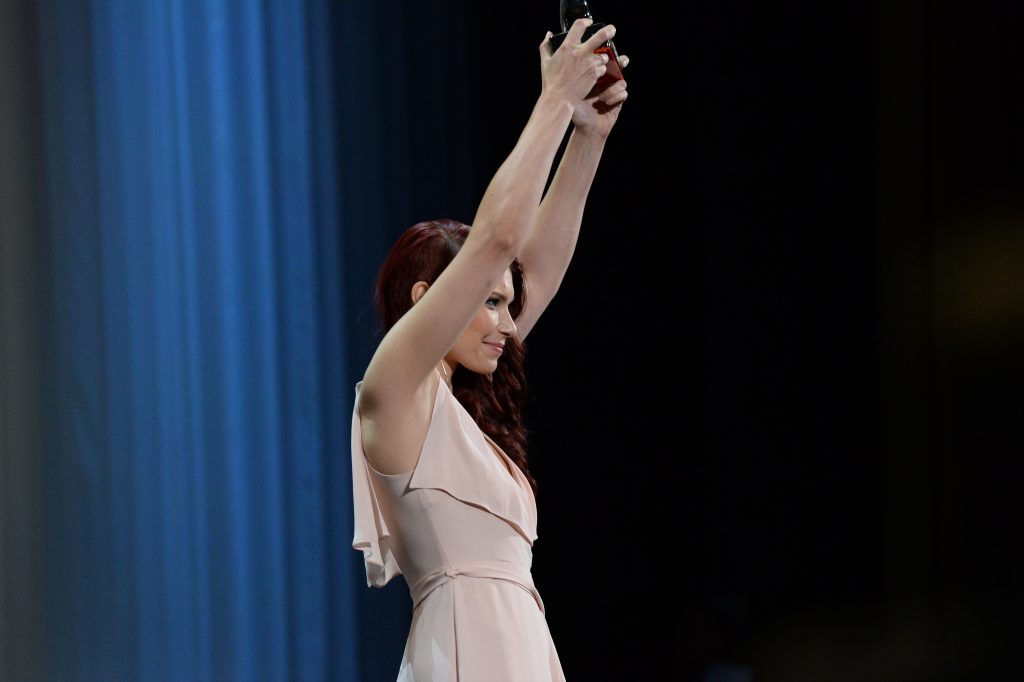
What, then, makes The Key so special? What is it about? A question much simpler asked than answered. The Key’s plot was not to be disclosed for a long time—at least not in detail. For the story only reaches its resolution at the very end of the 15 minute runtime, delivering a pretty flabbergasting surprise effect, which is part of the concept.
Ever since its success in Venice, however, the mystery has been exposed—meaning I can report on it with a clean conscience. Those still holding out for the surprise—the experience is coming to the Oculus Store soon—can safely read on for now, though: I will report on the genesis of the project and the end of the story on a second, hidden page (link is below).
The Story of The Key Kicks Off at the Door
They are really quite impressive, the two boxes that are part of The Key. At the Tribeca Film Festival, they were kept black, while here in Venice, they have been painted white to better reflect the exhibition concept. Apart from little brass bowls hanging in multiple rows along the outer wall, the boxes are completely unadorned. Two doors lead inside.
I feel slightly uneasy as I wait in front of one of the doors—as if I were about to enter a tunnel of horror, for the doors are shrouded in a nebulous secret. I mean this quite literally: whenever one of the doors is opened, stage fog glides out from inside to create a thick carpet about the bystanders’ feet. This creates two effects at once: for one, it is impossible to see into the cube through the opened door. Secondly, the whole ordeal feels very much like a theater stage.
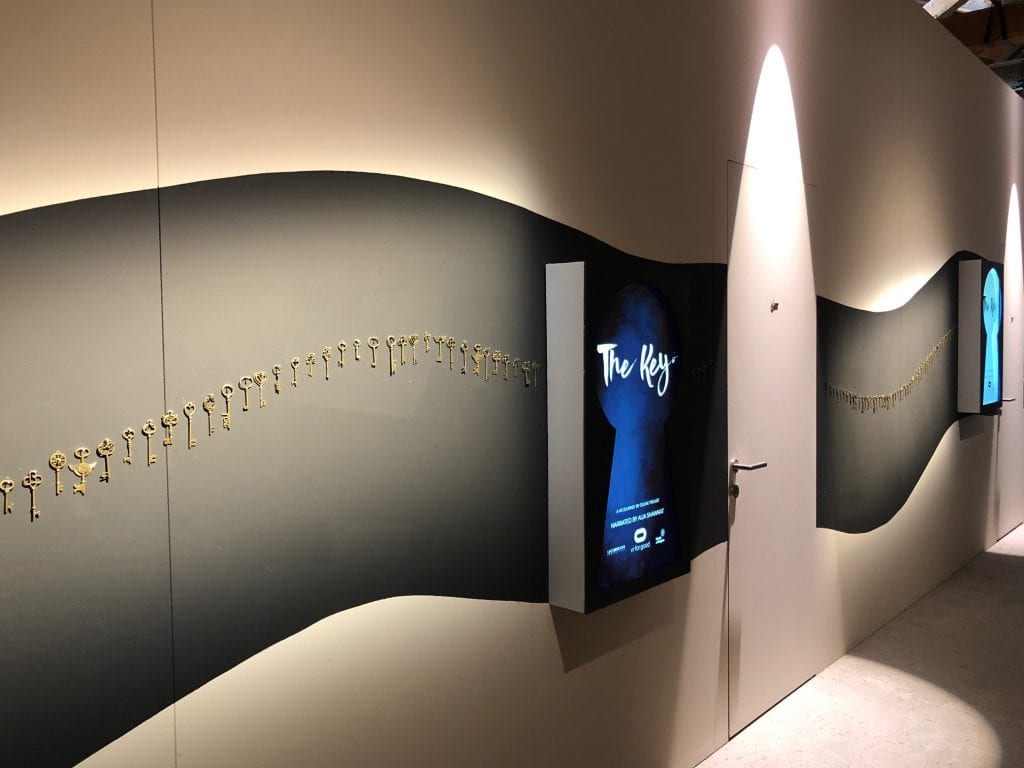
This feeling is further intensified with another trick: a staff member places a loudspeaker around my neck before I enter through the doors. The device is a wireless piece that snuggles up to my neck and starts playing music once the door starts to slowly open and the fog begins to creep out. Only I can hear it. Because I am not wearing headphones, I can no longer differentiate between sounds emanating from the speakers on my body and those produced by my surroundings. It feels like a film—I’m already part of the story.
Immersive Theater Augments the Entry into VR
Inside the box, I am met with an old acquaintance: an actress veiled in a long, white robe. It is the same young woman that greets me here in Venice as it was back at the Tribeca Film Festival, so I feel immediately at home with her. Her large eyes gaze at me while her lips remain closed. I can hear a voice begin to sound from the speakers around my neck.
Her name is Anna, the voice says—and so do the eyes of the woman standing silently in front of me. She can’t remember her past; however, again and again, she dreams of strange things. Where are these dreams coming from? I must find out, she implores.
The woman opens her fist. In her hand, she holds a key that glows mysteriously from the inside. I am to find a key like this, she tells me. Then she equips me with a VR headset and headphones, and places two controllers in my hands.
Lost Between Dreams and Memories
I am standing in a room in the virtual world. It’s a mundane room with a mirror, a dresser, an armchair, and some piles of books. Just as soon as I finish inspecting the room, three little companions confront me: each a colorful sphere with big wide eyes and an a character of their own. The voice, Anna, acquaints us.
The companions appear as a strong contrast to my own body, which I can contemplate in the mirror: a ghostly being with a black body, hands without fingers and a pallid, hairless head atop. I look a bit like a soft doll sewn for a child.
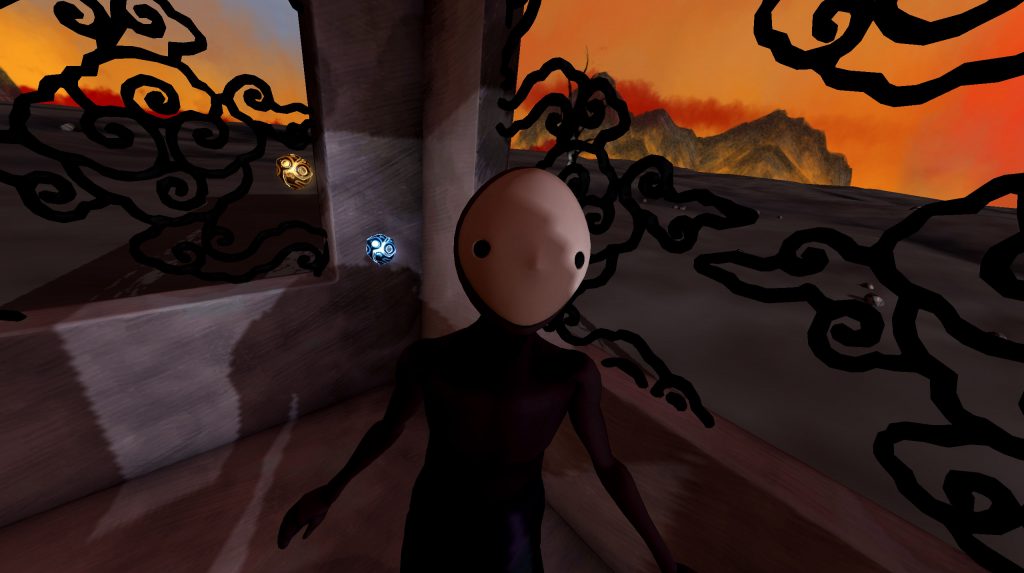
Suddenly, a storm descends upon us us and rips open the windows in my room. Objects shatter about and Anna’s voice takes on a panicked tone as she cries out to me: “Save the companions!” I try my best, but no matter how I try, I am only able to grab hold of two of them. The storm catches the third away and hurls it out of the room.
Slowly, the room around me fades and I step into the next dream. That is what I am in: Anna’s dreams. In them, I run into one-eyed scoundrels and hunched figures I stand among, while enduring an endless line. Stamps hammer down on documents, monsters attempt to hunt me down and my remaining companions are stolen from me one by one. But then, eventually, I find the key, and Anna remembers.
A New Style: The Watercolor Look
After I emerge from the VR world and give up my VR equipment, the actress fastens a little brass key to my festival pass. Henceforth, this will be a mark of initiates among the visitors of the festival: “Have you seen The Key already? Well, let’s talk about it then…”
During those conversations—cautious exchanges in quiet corners and hushed tones to ensure no one is listening—I hear a lot of praise. Yet, some suppressed criticism comes up now and then—it is mostly directed at the graphics: they are too simple, too two-dimensional. It appears the audience is split into sceptics and fans of The Key, while I certainly belong to the latter.
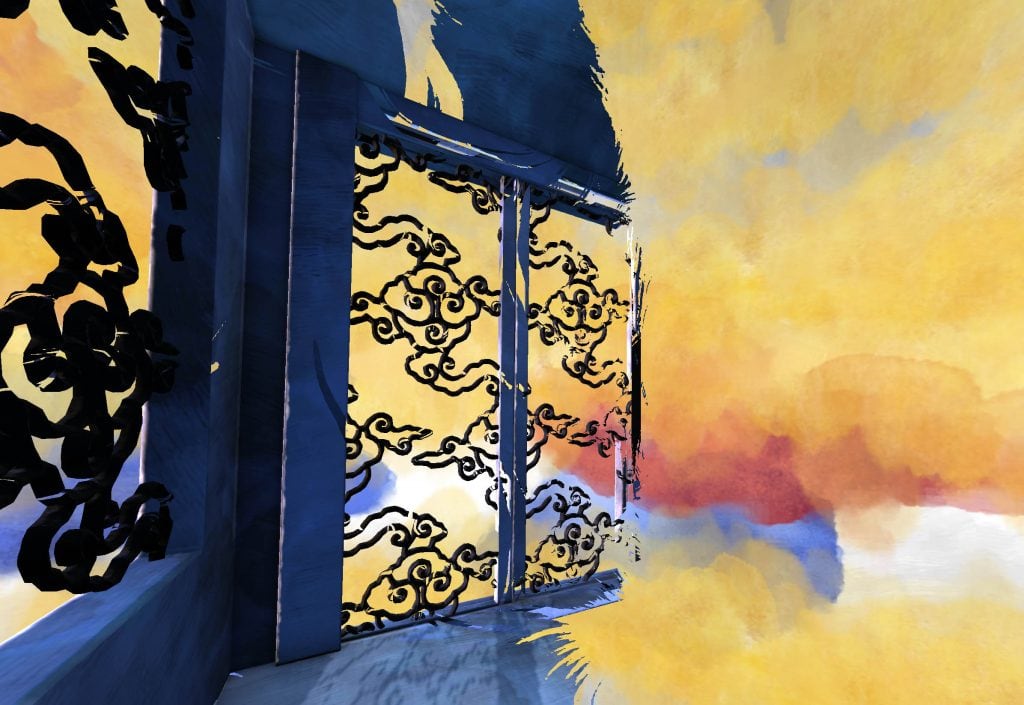
Celine, who I was able to meet for a long-hoped-for interview in Venice, explained the style’s development as follows:
At some point I had to find a style for it. There could have been many different styles. But I always liked watercolors—and simplicity in general. I think that in VR, simplicity works best. Some of my favorite VR experiences like Vestige or Dear Angelica are beautiful art, but they are also very simple.
And that is what we’ve been trying to do. My artist, Claire Aran, is simply amazing. I’m not an artist myself [she laughs], so I was telling her: ‘I want it to look like watercolors,’ and ‘I want a bright watercolor sky and dark foregrounds.’ We had to do a lot of back and forth trying to find the style.
And what sensational style! The blurred and undefined quality in The Key underscores the experience’s metaphorical nature. Colorful environments contrast black-and-white scenes and puppet-like figures. The awful becomes even more terrifying.
The Key Melds a Linear Plot with Little Interactions
The Venetian VR exhibition is split into linear and interactive projects. The Key ran in the latter category of competition. In my opinion, Venice VR’s classification tends to mislead, as the VR film about Anna and her dreams sets yet another example for an interactive VR experience built around an undeniably linear narrative.
The film was Celine Tricart’s first project featuring room scale VR and interaction. Celine started in film, where she contributed to a number of larger productions as director of photography. She also worked on numerous 360 degree projects and even wrote about it: you can find her book in my VR links.
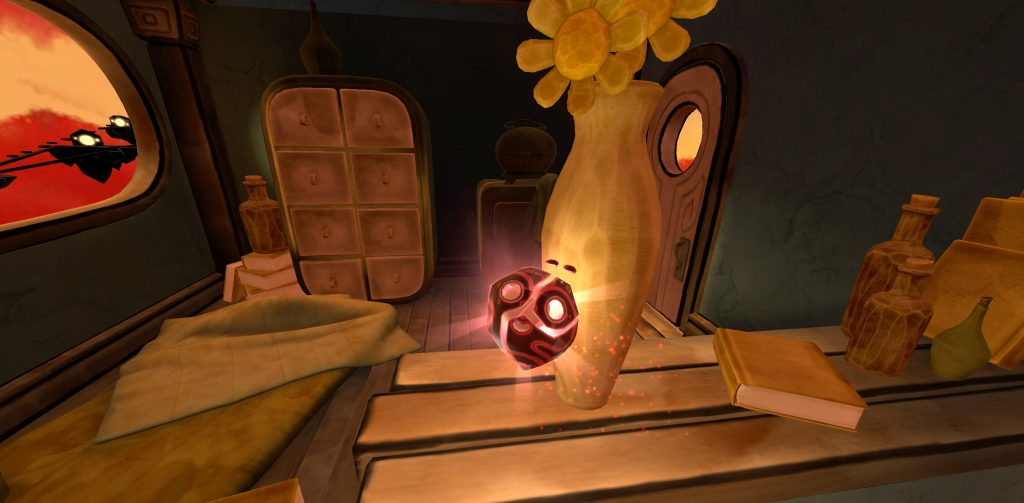
The Key takes place in first person. I can be „myself“ and am not dropped in another body or an role unbeknownst to me—which Celine placed great importance on. The story is mystical, the symbolic environments whisk me further into their world with every dream (as Celine calls the individual scenes). They are metaphors that I don‘t fully understand—and yet, I was able to experience a whole breadth of emotions: from anxiety and fear to joy and relief.
However, my interactions did not change much about the storyline. Now and again, I would grab after something or be given an object. I would not wield any power to change the course of the story, nor could I really help Anna. To me, it felt like she arrived at her own solution all by her own. I shared my concerns with Celine, who responded:
You’re guiding her; you’re helping her explore the dreams. Each dream brings a piece to the puzzle until the last dream where she connects the dots in her head and says ‘Now I remember!’ Without you she would not be able to remember—it is by your exploring the dreams that you unravel the story for her.
There it is again: that familiar tension between interactivity and dramaturgy. Affording the audience too much room for agency intrinsically risks detracting from the emotional level and the depth of the story (this articles explores this topic further – but it is only in German so far…).
The Key found its own solution for this issue: just as was done for the visual language, Celine Tricart opted for simplicity of interaction. This allows non-gamers to quickly and intuitively find their bearings. Generally, simply touching one of the virtual objects with my hands sufficed to keep the story moving.
Would you like to find out more about the genesis and background of the project? Then read the continuation on this hidden page (beware of spoilers).
Release in 2020 at the Latest
The Key came into being under the VR for Good program by Oculus, which I can’t write more about, as that would reveal the ending—which is closely connected to the project’s genesis. The VR film’s resolutions may be a tad bold or even simple, yet it does manage to surprise.
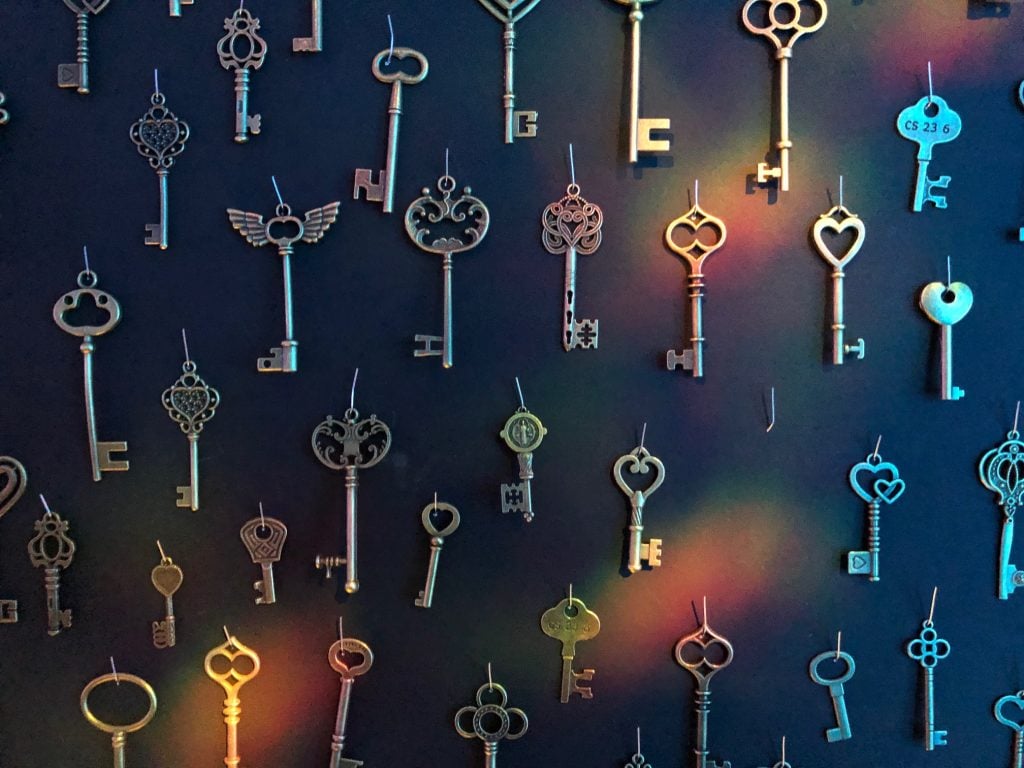
According to Celine, the VR experience will be rolled out free-of-charge on the Oculus Store by the end of this year or the beginning of the next. An exact date has not yet been set. I saw the experience on an Oculus Quest in Venice, so it is safe to say it will be open to Quest users, too.
Albeit, this version will be slightly different from the installation in Venice, Celine tells me. The changes concern the beginning and end of the experience, which were conveyed to the festival audience by the actress and pictures hung inside of the box. This information must be imparted in another way when dealing solely in VR. After all, people will hardly have access to an actress at home, Celine adds and laughs.
Soon enough, it’s time for me to go. As I walk, the little key jingles against my festival pass. I am sure to remember.
Translated by Jan Mc Greal
